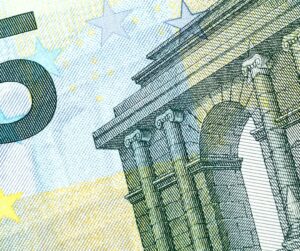How to Read Forex Charts for Free: A Beginner’s Guide
Forex trading, also known as foreign exchange trading, is the buying and selling of currencies on the global market. It is one of the largest and most liquid financial markets in the world, with an average daily trading volume of over $6 trillion. Understanding how to read forex charts is essential for any beginner looking to enter the forex market.
Forex charts provide valuable information about the price movements of currency pairs over time. They help traders analyze market trends, identify potential trading opportunities, and make informed decisions. While there are various types of forex charts, the most commonly used ones are line charts, bar charts, and candlestick charts.
Line charts are the simplest type of forex chart. They display the closing prices of a currency pair over a specified period of time. Each closing price is connected by a line, forming a continuous line chart. Line charts are useful for identifying long-term trends and visualizing the overall direction of a currency pair’s price movement. However, they do not provide detailed information about the high, low, or opening prices.
Bar charts, on the other hand, provide more comprehensive information about a currency pair’s price movement. They consist of vertical bars that represent the high, low, opening, and closing prices of a currency pair within a given time period. The top of the bar represents the highest price reached during that period, while the bottom represents the lowest price. A small horizontal line on the left side of the bar indicates the opening price, while a small horizontal line on the right side indicates the closing price.
Candlestick charts are similar to bar charts but offer additional visual cues that make them more popular among traders. Each candlestick represents a specific time period, usually ranging from minutes to months. The body of the candlestick represents the opening and closing prices, while the upper and lower wicks (or shadows) represent the high and low prices, respectively. If the closing price is higher than the opening price, the candlestick is typically colored green or white, indicating a bullish (upward) movement. Conversely, if the closing price is lower than the opening price, the candlestick is usually colored red or black, indicating a bearish (downward) movement.
To effectively read forex charts, beginners should familiarize themselves with key chart patterns and indicators. Chart patterns, such as support and resistance levels, trendlines, and chart formations, can provide valuable insights into potential price reversals or continuations. Indicators, on the other hand, are mathematical calculations that help identify market trends, momentum, and overbought or oversold conditions. Commonly used indicators include moving averages, relative strength index (RSI), and stochastic oscillator.
In addition to chart patterns and indicators, it is important to understand timeframes when reading forex charts. Timeframes refer to the duration of each candlestick or bar on the chart. Common timeframes include 1 minute, 5 minutes, 15 minutes, 1 hour, 4 hours, daily, weekly, and monthly. Shorter timeframes, such as 1 minute or 5 minutes, provide more detailed information about price movements and are often used for scalping or day trading strategies. Longer timeframes, such as daily or weekly, offer a broader view of market trends and are suitable for swing trading or long-term investing.
Fortunately, there are numerous free resources available online for beginners to practice reading forex charts. Many forex brokers provide free demo accounts, which allow traders to access real-time market data and practice trading without risking real money. TradingView, a popular online charting platform, offers a wide range of free forex charts with customizable indicators and drawing tools. Additionally, there are numerous educational websites and forums that provide free tutorials, articles, and webinars on forex chart analysis.
In conclusion, learning how to read forex charts is essential for beginners looking to enter the forex market. Line charts, bar charts, and candlestick charts provide valuable insights into currency pair price movements. Understanding chart patterns, indicators, and timeframes can help traders make informed decisions and identify potential trading opportunities. With the abundance of free resources available online, beginners can practice reading forex charts and enhance their trading skills without incurring any additional costs.






